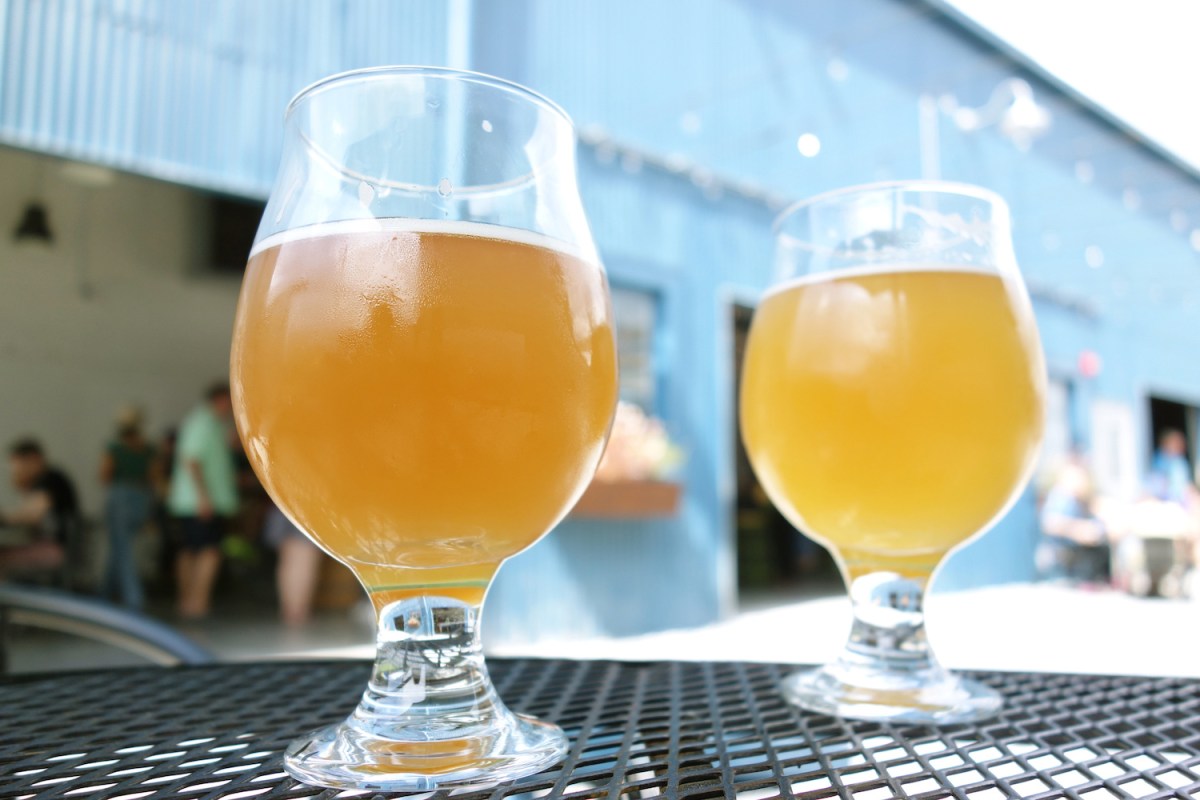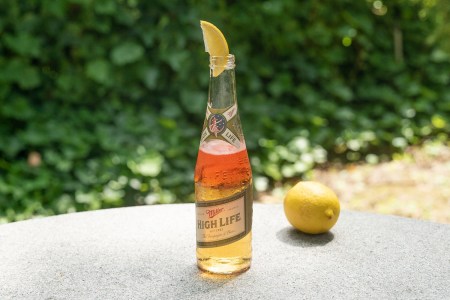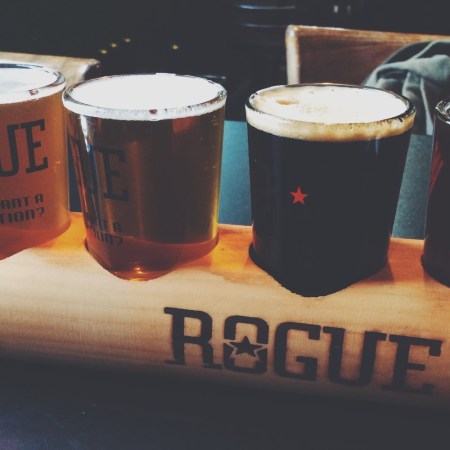When it comes to summer drinking, nothing satisfies in the warmer months like a good wheat beer. Sure, pilsners and other lagers are ubiquitous and get lots of love. Lighter IPA styles like the cold IPA are just as prevalent and make for a fine porch beer as well. There are even plenty of quality seltzers these days. But wheat beers speak to summer drinking in a way that nothing else can.
At the most basic level, a wheat beer is exactly what it sounds like: a beer made with a high proportion of wheat. Within that definition is a whole range of styles, all of which are perfectly optimized to be sipped on days when it’s nicer to be outside than inside.
It’s not accurate to say that wheat beers are uncommon. They do, however, appear more uncommon than they truly are. You’ve got your Blue Moon, a beer made by MillerCoors that seems to be just about everywhere in the United States, as well as long-running craft darlings like Allagash White, Avery’s White Rascal and Bell’s Oberon Ale. And then there’s the host of other wheat beers made by the many (many) craft breweries in the country that may or may not be explicitly labeled as a wheat beer. Because unlike pilsners and IPAs, wheat beers go by a wide range of names in the United States, and the use of wheat isn’t always called out.
“Some people seek out wheat beers, some people just seek out the styles they like and those happen to be wheat beers,” says Matt Simpson, the founder of the craft beer hosting and consulting company The Beer Sommelier. “A lot of people drink wheat beers without even realizing they’re drinking wheat beers.” Case in point: many hazy IPAs lean on the grain. The high amount of proteins in wheat, as well as oats, are part of what contributes to that signature cloudiness.
Intentionally seeking out wheat beer in its various styles will give you a new appreciation for all things wheat. They’re a gateway into craft beer from wine and spirits, transition beers for when you want something easy drinking, and, historically speaking, some of the most long-appreciated beer styles.
A Brief History of Wheat Beers
The Oxford Companion to Beer notes that the first wheat beers were likely some of the first beers, period. Sumerians made wheat beers 6,000 years ago, and ancient Egyptians followed. Inching closer to the modern era, brewers in Bohemia (modern day Czech Republic) made wheat beers starting in about the 12th or 13th century. The Bohemian styles moved to modern day Germany through Bavaria in the 1500s, much like how pilsners moved over time.
Today, weissbier (German for “white beer” and named after the light and slightly cloudy nature of the style) is one of the most iconic and popular beer styles in the German region of Bavaria. Elsewhere in the country, they’re called hefeweizens, or “yeast wheat,” named because they’re typically unfiltered wheat beers that get some haziness and most of their flavor from the yeast.
The Belgians were brewing their own style of wheat beer, called witbier, in the 14th century around the same time as Germany’s wheat styles were picking up steam. And as with some of the most popular Belgian beers today, those witbiers were often made in monasteries by monks. Unlike their German counterparts, Belgian brewers had no qualms with adding local herbs and spices to their witbiers. That can be seen through to today, where Belgian and Belgian-style witbiers typically have coriander, orange peel and other herbs and spices. American wheat beers are most often copies of German or Belgian styles — or draw a whole lot of inspiration from them.
“They grew up with wheat beer,” says Nick Nock, head brewer at SweetWater Brewing Co. in Atlanta. “They didn’t really play with the hops like we do over here in the States. They grew up on wheat beers, we grew up on hoppy beers.”
The breweries that do it well and are known for wheat beers have found success. Widmer Brothers Hefe — known affectionately as “the first American hefeweizen” — was first released in 1986 and has been a top seller ever since, says Widmer Brothers brand manager Jacob Neilson. The brewery also continues to experiment: Widmer recently released the 8% ABV Imperial Hefe, a far departure from traditional wheat beer’s lighter reputation.
“I might be a bit biased here, but I believe the American style truly allows the wheat and hops to shine like other styles can’t,” Neilson says. “German and Belgian styles have so much diversity of flavor that is derived from the yeast in the beer, but the variety of hops in American-style wheats often showcase higher bitterness, citrus notes and incredible floral notes that elevate the smooth body and cracker-like nuances that wheat imparts in a beer.”
In the United States, brewers “do our own few styles really well, and we do everybody else’s styles really well too,” Simpson says. There are simply a lot of independent brewers in the country who are free to experiment with styles — to be exact, there were more than 9,100 craft breweries in 2022, according to the Brewers Association.
And sure enough, prominent breweries are investing in new wheat beers. SweetWater recently tested out Orange, a new fruited wheat beer to join the brewery’s long standing blueberry wheat Blue, and will do a full launch this year. There’s also Four Peaks, which recently released The Joy Bus WOW Wheat that’s infused with orange peel and dedicates a percentage of sales to Phoenix-based The Joy Bus, a non-profit that aims to improve the quality of life for homebound cancer patients.
The best places to dabble in wheat beers are at local craft breweries. I travel often for work and always make a point to stop at a brewery or beer bar. There’s not always a wheat on the beer list, but when there is, I order it. In Denver where I live, there’s no shortage of pretty much any style of beer you could imagine. But wheat beers are still less common than IPAs, lagers and stouts, yet there’s nothing more satisfying than sipping one at a brewery on a hot Colorado day.
The Spaghett Is Your Low-ABV Drink of Summer
A simple beer cocktail that’s also easy to convert to non-boozy variationsThe Heart of the Perfect Summer Beer
Wheat beer can be a gateway to other beers. Light beer fans will appreciate the easy-drinking nature and find that maybe craft beers aren’t the all-hops, heavy IPAs that they thought. People who are more into wine, spirits and cocktails can appreciate the complex flavors found in wheat beers from the added fruit, herbs and spices that aren’t typically associated with beer. Regular IPA drinkers will find a range of interesting flavors that make all things wheat just as interesting as the brews they typically enjoy.
“Blue served its purpose in ‘97, introducing folks to new craft beers in the South, and these days it’s doing the same for consumers who are demanding low ABV, highly drinkable beers,” says Patrick Clark, marketing manager at SweetWater.
Blue was one of the first beers that SweetWater made after starting in 1997. The founders came from Boulder, Colorado, and when they went south, they brought the hops with them, Nock says. They released 420 and it took off, demanding most of the attention, as hoppy beers tend to do in the United States. Still, the love for Blue never faded throughout the years — it remains in the list of top-selling wheat beers in the country, Clark says.
“I used to work all these beer festivals and I swear, every single festival I worked at the Blue keg was the first keg to go,” Nock says about SweetWater’s. “There could be 100 kegs at this festival between 70 different breweries, the Blue keg was always the first. Everyone and their mother was drinking it.”
A love of the classic and historic styles (or even knowing what those styles are) is not required to be a fan of wheat beers. Just because you don’t like the banana, spice and peppercorn that a traditional German hefeweizen gets from its particular yeast strain doesn’t mean you don’t like wheat beers in general. Wheat is a fairly unobtrusive ingredient as opposed to malted barley. That makes it perfect for layering fruit flavors or for making clean, easy drinking light beers — you know, the kinds that are perfect for long summer days outside (that maybe even start in the morning).
“There was a time when Blue’s tagline was ‘not just for breakfast anymore,’” Clark says. “To me, there’s no better way to start your Saturday than Blue and orange juice.”
Styles to Try
Witbier
A light and easy-drinking beer that’s spiced with coriander, orange peel, lemon peel and other herbs and spices, depending on the brewery. They’re typically highly carbonated. Outside of hefeweizens, American drinkers are likely most familiar with witbiers, thanks to the proliferation of Blue Moon and Shock Top. Hoegaarden is among the most famous Belgian witbiers, while Allagash White, Avery’s White Rascal and Brewery Ommegang’s Witte are modeled after witbiers and some of the best American-made wheat beers in any style.
Weissbiers and Hefeweizens
The original German wheat beers are low alcohol, light, slightly hazy and let the German yeast do much of the guidance in terms of flavors. These beers typically have notes of banana, bubblegum and clove, but unlike witbiers, those come wholly from the yeast without added herbs, spices or fruit. Weihenstaphaner and Erdinger make classic versions that are widely found stateside.
Berliner Weisse and Gose
While hefeweizen is the big wheat style in Germany, it’s not the only one. Berliner Weisse (whether made in Berlin or elsewhere in the style of those Berlin beers) is a type of sour that often gets the addition of fruit by American brewers. Gose also had a moment in the late 2010s and can still be found at craft breweries if you look for it. The style comes from the German town of Goslar and is lightly sour with added salt and sometimes fruit or herbs. Odell’s Sippin’ Pretty is close to a gose style with açai, guava, elderberry and Himalayan pink sea salt.
American Wheat Beer
This sort of catch-all term is used by the Brewers Association to refer to wheat beers made in the United States. They often draw influence from witbiers and hefeweizens, though if leaning on the former, the brewery will often note as such to distinguish when there are spices, herbs and fruit added. American wheat beers have healthy carbonation and are usually low in alcohol (with the exception of Widmer’s new Imperial Hefe, of course). They also typically lack the strong clove and banana yeast notes that German hefeweizens have and get a slightly more hoppy flavor from New World hops. The beers typically use 30% to 50% wheat in the mash bill (less than most German wheats), according to the Beer Judge Certification Program.
Fruited American Wheat Beer
This is an easy-drinking gateway from wine and spirits. The light flavor profile of wheat makes it the perfect base to layer in fruit flavors for a refreshing, low alcohol drink that can be sipped from breakfast to the barbecue to hot summer nights. American versions of Berliner Weisse and Gose that use fruit can be thrown in this category in the broadest sense. The types of fruits vary by brewery and location, but SweetWater Blue and Orange are notable stand outs. Rare Barrel and Cascade both make incredible fruited wheats that are sold in 750 milliliter bottles with lineups that often vary year to year.
Every Thursday, our resident experts see to it that you’re up to date on the latest from the world of drinks. Trend reports, bottle reviews, cocktail recipes and more. Sign up for THE SPILL now.

























